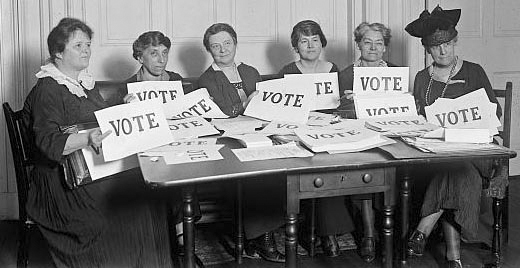Forty-five years ago yesterday, the last state ratified the federal ERA. But yesterday the State of Nevada ratified the federal ERA making it the 36th state in the country to do so. The required number of states to ratify a federal ERA is 38. Oregon voters overwhelmingly passed the Oregon ERA to be included in our state constitution in 2014.
The State of Nevada has one of the highest percentages of women in its state legislature. Leanne Littrell DiLorenzo, founder and president, of VoteERA.org, says, “We can no longer assume all we need is one party to bring equality to women. In fact, what is happening in Nevada proves that the ERA is bi-partisan as we have support from Republicans and Democrats. The key factor is women. This is a good day to start talking to all the girls and women you know, talk to their teachers, talk to the principals, talk to your legislators and fight for women’s equality. Fight to have women’s equality taught in schools and help build programs to inspire young women to run for office! Every citizen can work toward these goals.”
The ERA was written in 1923 and the language is “Equality of Rights under the law shall not be denied or abridged by the United States or by any state on account of sex.”
The ERA had a handful of hearings in the ’30s, ’40s and ’50s and finally in 1972 it passed Congress. You know why and how it passed Congress? Because Representative Martha Griffiths from Michigan got tired of her committee chair holding the ERA hostage for decades, so she decided to pull a discharge petition which required 214 signatures from her congressional colleagues to yank the bill from her committee chair.
She was successful. She then ran the bill to Oregon’s Congresswoman Edith Green and Green ran it through her committee. The ERA then landed on the floor of Congress for a vote and it passed. The ERA remains only one of two U.S. Constitutional amendments in our nation’s history to have a deadline attached to it.
The first one was for prohibition, which passed in 18 months and the other one is the ERA which had a seven year deadline attached to the bill and it is in its 94th year of trying to pass. Once the ERA passed Congress on March 22, 1972 it was sent to all the states to ratify it to the U.S. Constitution so women in America would finally have constitutional equality.
The requirement is that three-fourths (38) of the states ratify the ERA. The deadline expired in 1979 and they were three states short. Congress extended the deadline by three more years but they still failed to meet the June 30, 1982 deadline and thus the ERA failed to become a part of the U.S. Constitution.
There have literally been millions of people who have been a part of the ERA campaign over 94 years. The ERA has continued to be introduced in every congressional session even after 1982.
The 15 states that did not ratify the Equal Rights Amendment before the 1982 deadline were Alabama, Arizona, Arkansas, Florida, Georgia, Illinois, Louisiana, Mississippi, Missouri, Nevada, North Carolina, Oklahoma, South Carolina, Utah, and Virginia. In 2017 ERA bills have also been introduced in the legislatures of Arizona, Florida, Illinois, North Carolina, Utah, and Virginia.
The main obstacle to bringing constitutional equality to women in America is awareness. “We know this through polling for decades upon decades,” adds Littrell DiLorenzo. “Today we bring much more awareness to what happened in Nevada. Momentum is critical in any civil rights movement. Oregon recently placed an ERA in its state constitution and this Nevada event is historic.”





